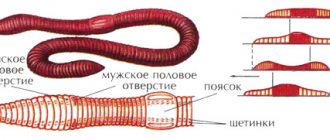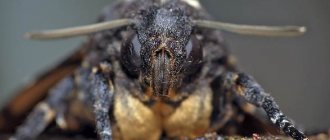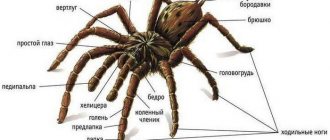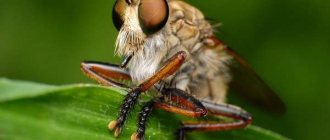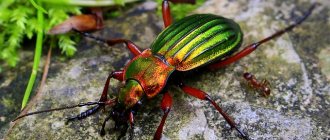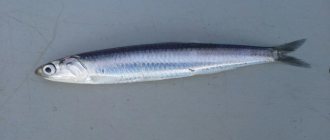Ray-finned fish belong to a very broad class, which includes almost 95% of all currently known inhabitants of rivers, lakes, seas and oceans. This class is widespread throughout all water bodies of the Earth and is a separate branch in the superclass of bony fishes.
Ray-finned fish (actinopterygii) get their name from Greek and Latin. It consists of two parts - “beam” and “feather”. This name has a connection with the structure of the fins.
Evolution
Since all species of marine fish and their freshwater counterparts are carefully studied, every archaeological find in this area is of interest to scientists. Thus, it was established that the most ancient skeleton of fossil ray-finned fish is older than 420 million years. Based on its structure, it was determined that it was a predator belonging to the order Palaeonisciformes. Similar finds were found in Russia, Estonia and Sweden.
The following important finds turned out to be more than 200 million years younger. These were the skeletons of the first bony fish, which became the progenitors of a huge number of species, later called ray-finned fish. The emergence of a large number of species variations is explained by the fact that during the course of evolution, fish were forced to adapt to different conditions and different levels of solar radiation. Related groups emerged that were forced to adapt to gradual changes in the world around them.
How to choose flounder
Before choosing fish, the buyer should study several subtleties in order to choose a product of the highest quality and not experience problems during the cooking process. Flounder suitable for purchase and cooking must meet the following requirements:
- meaty fillet;
- white fillet color;
- rough scales;
- Smooth surface;
- pink gills and clear eyes;
- sealed packaging without damage;
- taking the fillet to its original shape after pressing;
- fins and tail are always splashed with orange.
Please note: Chilled flounder should be inspected carefully. Buyers also need to pay attention to the information on the packaging, the amount of ice and the expiration date. If the buyer is aiming to buy flounder with an ice glaze, then he should take into account that the glaze layer should not be too thick.
Often in grocery stores you can find a product with ice or snow in some areas. Such fish cannot be purchased, since this factor indicates that the product has been frozen multiple times. A suspiciously yellow color also indicates that the product is not fresh.
Ray-finned fish. General characteristics of the group of ganoid fish
The first group, the ganoid ray-finned fish, consists of only four orders. The most numerous and widespread of them are sturgeons. The structure of the representatives of this order is quite primitive; their skeleton consists almost entirely of cartilage, in which individual vertebrae are absent. On the body there are 5 rows of rhomboid bone plates.
Cartilaginous ganoids differ from cartilaginous fish in the formed skull bones, gill covers and the presence of a swim bladder. Sturgeon-like cartilaginous ganoids include some valuable commercial ray-finned fish, representatives of which are sterlet, sturgeon, beluga and others.
Mackerel family - photos, names
The family includes ray-finned fish, which are characterized by:
- additional fins behind the anal and soft dorsal fins;
- laterally compressed thin caudal peduncle with 2 or 3 keels;
- fusiform long body;
- bony ring around the eyes.
The names of the fast swimmers of this marine family include: tuna, marel, sard, bonito, wahoo, Azov-Black Sea, Atlantic, Kuril and Far Eastern mackerel. Their meat usually does not have small bones, but is quite fatty and tender. It contains a lot of vitamins D and B12, as well as omega-3 acids.
The structure of a group of bony fish
The second group is the most progressive. The body of bony fish is covered with thin rounded bony plates, which are popularly called scales. The scales are arranged according to the principle of tiles. Growth rings are visible on them, from which the age of the individual can be determined.
The spine skeleton consists of individual ossified vertebrae, which are connected by ligaments that allow the fish's body to bend. Each segment of the spine, except for the cylindrical part, has an arch with a spinous process. The purpose of the upper vertebral arches is to create a canal to protect the spinal cord. Directed down from the vertebrae are the transverse processes to which the rib bones are attached.
Ray-finned fish from the bony group have a well-formed skull consisting of a large number of bones. The brain is protected by a bone capsule. The skull is fixedly connected to the bones of the spine.
The musculoskeletal system is formed by the skeleton and muscles that move the fins, gill covers, and jaws. Ray-finned fish move thanks to the tail section with a large fin. Stability and straightness during movement are provided by unpaired fins. And the paired fins maintain the correct position of the body in the water and serve as rudders.
Character and lifestyle
Flounder spends its entire life at the bottom, where it buries itself in the sand and serenely dozes. Flounders are calm and, despite their status as a predator, prefer to hunt without making any effort. Adults are rarely active and prefer to hunt from ambush.
Wriggling in wave-like movements, the fish buries itself in the sand and soil, where it lies motionless, waiting for a passing victim. Color also plays a key role in the hunting process. The body color of a fish can also change depending on its environment (mimicry). Feeling threatened, the flounder rises sharply, turns over on its side and swims to a safe place, where it also buries itself in the sand.
Variety of species
Freshwater ray-finned fish and numerous species of marine fish, combined into one class, have different sizes and appearances. At the same time, the difference in size ranges from 8 mm to 11 m. The weight of individual representatives can reach 2235 kg; we are talking about a sunfish that was caught in 1908 in the Sydney area.
Ray-finned fish include all types of herring, numerous salmon-like fish, freshwater and saltwater eels, carp fish, catfish, cod, stickleback, mullet and all types of perch and flounder.
Representatives
Ray-finned fish are the largest group, which includes almost 95% of all modern fish species on the planet. All of them are divided into several groups, among which the most famous are:
- herring,
- salmoniformes,
- carp-like,
- cod-like
Let's look at each family in more detail.
Herring family
One of the species of ray-finned fish that lives in northern latitudes is the herring family. There are almost 70 species of herring, the most common of which are:
- Atlantic,
- Araucanian,
- Pacific.
All representatives of herring fish are of average size, their body length reaches 25-45 centimeters. They have a flat and streamlined body. The color of the belly of the herring is lighter than the back. The dorsal area of all individuals is gray with a bluish tint.
Herring fish move in schools, often accompanying fishing boats. Often, various types of herring become prey for larger predatory fish - salmon, tuna and cod.
Fish of the herring family are often used in cooking because they have excellent taste characteristics. Herring meat contains many useful microelements, so it is often included in the diet menu. Herrings are eaten fried, salted, smoked, pickled and dried.
Representatives of salmon
The salmon family is composed of three subspecies:
- salmon,
- whitefish,
- grayling
The salmon subspecies includes 7 genera. They are predators or have a mixed diet. Representatives of salmon have a large or medium-sized body and a large mouth, in which many large teeth are located. The most famous representatives of this subspecies are salmon, trout, pink salmon, chum salmon, sockeye salmon and others.
The subspecies of whitefish includes 3 genera. Their mouth size is smaller than that of representatives of the salmon subspecies, and their scales are larger. Whitefishes also differ from the salmon subspecies in the structure of their skulls. Examples of whitefish are Valaamka, omul, peled, broad whitefish and others.
The grayling subspecies is formed by only one genus. It is distinguished from other subspecies by a more massive dorsal fin. Graylings are freshwater fish that live mainly in small fast-flowing rivers and cold lakes. The most famous representatives are:
- European grayling,
- Siberian grayling,
- Mongolian grayling.
All representatives of the salmon family have common structural features. Their long body is flattened on both sides. The pelvic fins are located in the center of the abdomen. The pectoral and pelvic fins do not have spiny rays. There is a pair of fins in the back area. One is located in the central part and is the main one. The second small fin is located opposite the anus and is the most important distinguishing feature of salmon fish.
Around the mouth of salmon there are maxillary and premaxillary bones. Most fish of this family have transparent eyelids.
Salmon meat is a most valuable delicacy. Europeans bake it in the oven or grill, fry it, and make kebabs, pates and pies from it. In Asian countries, salmon is used to make salads, soups and sushi. Salmon meat is also eaten salted, dried, pickled, smoked and even raw.
In addition, salmon caviar is a fairly popular, but expensive delicacy. However, red caviar is much cheaper than black caviar, which is available exclusively to rich people. Salmon caviar is used as a separate dish, served in small salad bowls, as a filling for pancakes, and for making tartlets, sandwiches and other snacks.
Carp breeds
The carp family is a large and diverse group of fish that lives in both sea and fresh water. The number of carp species is huge, so they were combined into 250 genera and 9 species.
Carp fish are heat-loving species. This means that the closer to northern latitudes, the less common they are.
The diet of some cyprinids consists of insects and plankton that fall into the water, while others find food in plants or in the water column. With the onset of autumn, the hunting season ends and until spring the fish falls into torpor.
The color of carp species is most often light green or golden. Body length ranges from 6 centimeters to 3 meters. This difference in size is explained by the variety of carp species and their habitat. Small species live on the North American continent. The middle zone of the Eurasian continent is inhabited by larger carp breeds, the length of which varies from 20 centimeters to 1.5 meters. Individuals larger than 80 centimeters are rare. Medium-sized carp fish are the most common.
A distinctive feature of carp breeds is that their teeth are located on the pharyngeal bones inside the pharynx, and not on the jaws. The fish grabs food with its mouth, pushes it into the pharynx, where it is ground. Cyprinids have a mobile oral cavity and fleshy, flat lips. Many representatives have a pair of antennae above the upper lip. Carp species have a powerful swim bladder, which consists of 2 sections. In some representatives the bladder contains 3 sections. The body is most often covered with large scales.
All carp fish spawn exclusively in freshwater reservoirs. During the spawning period, the female lays eggs on the surface of stones and algae leaves. Caviar has a viscous sticky consistency.
The most famous examples of carp species are crucian carp, bream, ram, roach and others.
Exotic species
You can make a huge list of interesting exotic inhabitants of the deep sea and home aquariums that belong to this class. The most striking of them are:
- the murjan fish, whose huge eyes contrast with the pinkish color of its scales;
- angel fish, decorating the sea with bright stripes and networks of multi-colored scales;
- sea bass, encountering which can be dangerous because it has a toxic substance in its fins;
- a seahorse that can decorate any aquarium;
- Labeotropheus fish, which hatches eggs in its mouth;
- angelfish, which has gained fame among aquarists not only for its cute appearance, but also for its devotion to its mate.
The diversity of representatives of this class appeared as a result of evolutionary processes. Today, most of the fish that live in the rivers, seas and oceans of our planet, or rather 95% of all existing species, are ray-finned. Of course, it is simply impossible to describe all representatives. There are too many of them, but it makes it all the more interesting to study this class, finding more and more new information about it. It is not known for certain whether all the inhabitants of the seas and oceans are familiar to humanity; perhaps new discoveries and sensations await us.
Newfeathers
A very important step in the evolution of Actinopterygian fish was the origin of Newfins, when the bulk of them had better control over the movements of the dorsal and hind fins, which led to an improvement in their swimming abilities. This distinguishes them from Ganoid fish.
They acquired several modifications of the skull, which allowed the evolution of different feeding mechanisms and, therefore, the colonization of new ecological niches.
All of these characters represent major improvements, so that Newfins became the dominant group (and thus taxonomically vertebrates), and they also include the vast majority of modern fishes. Among the basal Neopterygians, the family Semionotidae has played a crucial role in the attempt to understand the origins and relationships of other neopterygian lineages.
Regan believed that Semionotidae belonged to the ancestors from which all other neopterygian lineages, including teleosts, descended. Brough proposed that most, if not all, Holostea evolved independently from the families Semionotidae and Eugnathidae. Danilchenko and McAllister classified the Semionotidae into the subclass Amiida or Amiiformes, distinct from the subclass Lepisosteiformes, but Gardiner placed them with the Lepisosteidae in the superfamily Semionotoidea or order Semionotiformes.
Patterson, having included the Dapediids in Semionotidae, concluded that the Semionotidae represented a grade group, and placed them as basal halecostomas with uncertain relationships.
Examples of species representatives
| Classification | Semionotidae | Eugnathidae | Amida | Lepisosteidae |
| Scientist | Regan | Bro | Danilchenko | Gardiner |
Yandex pictures
